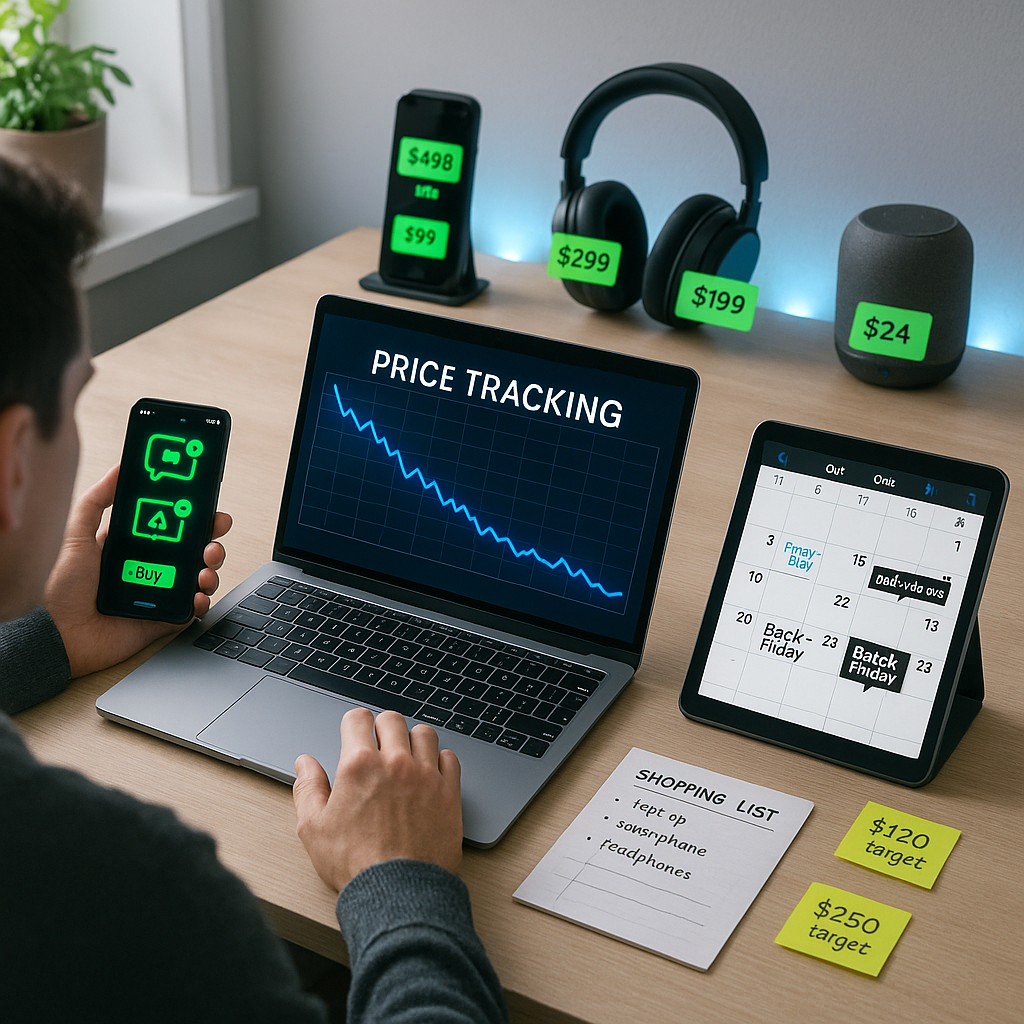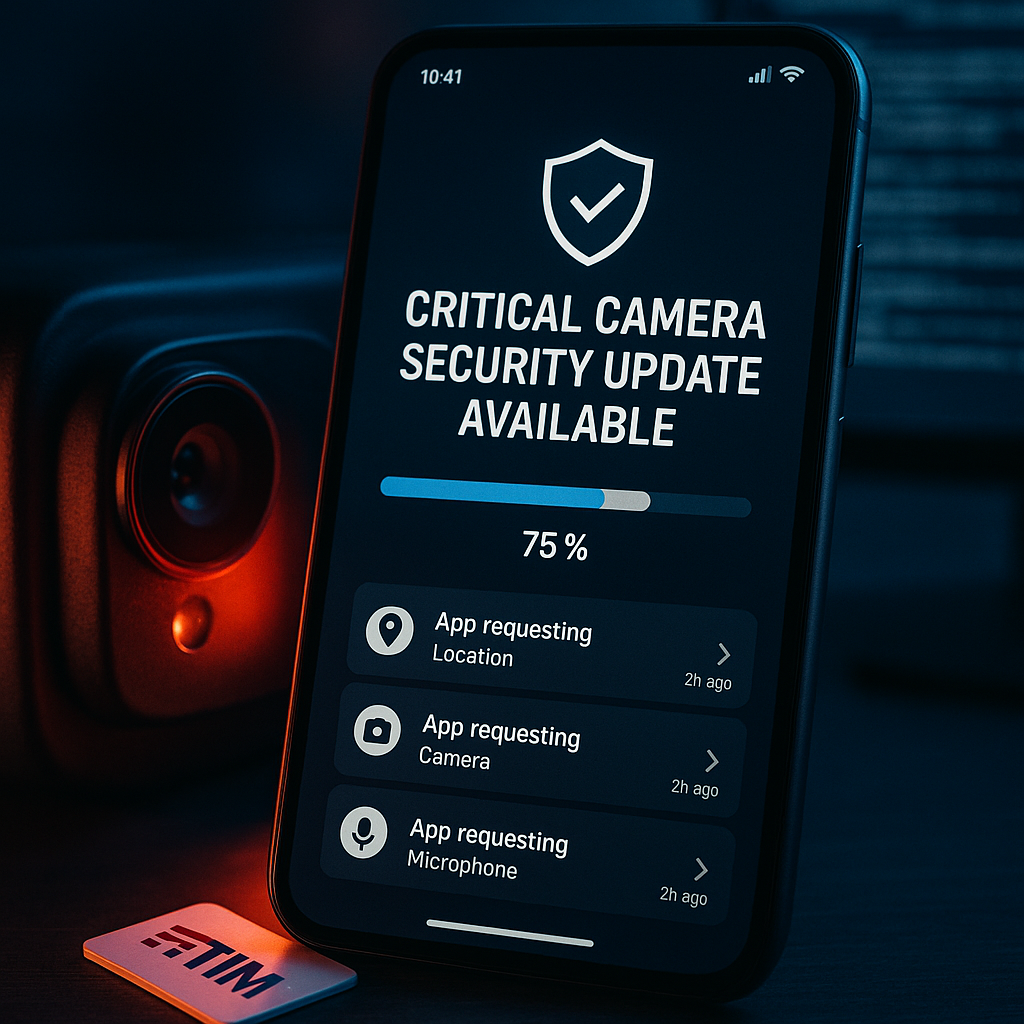Key Takeaways
Navigating seasonal tech deals is about much more than circling popular sales dates on your calendar. To consistently score the best tech bargains, it is essential to understand not only when to shop, but also how and why certain deals emerge. The following takeaways offer proven strategies and overlooked insights to help you master seasonal tech shopping and maximize your savings across a variety of categories.
- Master the tech release calendar, not just the sales cycle: The best savings come from aligning purchases with product launches. New releases frequently trigger substantial price drops on earlier models. Sometimes, these even surpass the discounts of traditional sale events.
- Unlock seasonal timing advantages for every tech category: Different types of tech hit their lowest prices at various times. Laptops often see steep discounts after back-to-school, TVs become affordable before major sporting events like the Super Bowl, and smart devices frequently drop in price during events such as Prime Day or Black Friday.
- Leverage price tracking tools for genuine bargains: Utilize reputable price comparison platforms and alert systems to verify that advertised deals provide real savings compared to historical pricing averages, ensuring you aren’t swayed by marketing alone.
- Look beyond headline discounts to assess true value: Carefully review bundles, extended warranties, and added gift cards. Sometimes these extras make a moderate deal more worthwhile than a deeper but restrictive discount.
- Prepare ahead to excel during flash sales and limited-stock events: High-demand items often sell out rapidly. Set wish lists, pre-register accounts, and have payment information ready in advance to increase your chances of snagging popular products during major sale days.
- Know when to wait and when to buy: Not every device is worth purchasing during every big sale. Be patient with products that historically receive larger markdowns after newer models are released.
- Budget and shortlist smartly in advance: Identify your most-needed items, set price alerts, and subscribe to brand and retailer newsletters early to catch last-minute or exclusive seasonal offers.
By combining smart timing, reliable evaluation tools, and a clear plan, you can turn seasonal tech shopping into a strategic and rewarding experience. Next, let’s explore the best annual sale events, category-specific timing tricks, and practical tools that will help you land genuine tech bargains throughout the year.
Introduction
Finding authentic tech deals isn’t a game of luck. It’s about timing, strategy, and knowing exactly where and when to look. Efficient seasonal tech shopping extends far beyond snagging the loudest advertised discount. The truly rewarding offers appear when your purchase timing aligns with new product launches, category-specific sales trends, and meaningful price drops that go beyond all the marketing buzz.
Understanding these dynamics allows you to shift from simply chasing sales headlines to confidently identifying the best moments to buy—even when the crowd’s not sure. With expert guidance, effective price tracking tools, and a thoughtfully crafted wish list, you can unlock discounts on everything from high-performance laptops to smart home gadgets. Let’s delve into the proven tactics and annual sales cycles that can truly transform your approach to tech shopping and make those savings last.
Un passo avanti. Sempre.
Unisciti al nostro canale Telegram per ricevere
aggiornamenti mirati, notizie selezionate e contenuti che fanno davvero la differenza.
Zero distrazioni, solo ciò che conta.
 Entra nel Canale
Entra nel Canale
Understanding the Seasonal Tech Deal Cycle
A foundational step in mastering tech bargains is understanding how the retail calendar and product cycles interact. This knowledge enables you to anticipate the best times to buy across a wide range of tech categories.
Major Shopping Events Overview
The tech retail calendar is defined by several landmark shopping events, each with unique product focuses and discount patterns. Amazon Prime Day, typically in July, is renowned for deals on Amazon-branded products and smart home devices. Black Friday and Cyber Monday in November offer the year’s broadest range of deep discounts across electronics, often reaching 30-40% off on select brands.
Still, industry insiders know some of the best deals can pop up outside these headline events. For example, the back-to-school season (July through September) features competitive pricing on laptops. This period can deliver better value than Black Friday, with average savings of 25-35% on mainstream models. Similarly, the days between Christmas and New Year’s (commonly called Boxing Week) can match or even surpass Black Friday prices, with the added advantage of less buyer competition.
Different industries align their sale periods with their unique cycles. In healthcare, for instance, electronic health record software often goes on discount at the end of fiscal years, coinciding with hospital budgeting schedules. In the education sector, classroom tech like Chromebooks and education software tools see major discounts before school terms kick off.
Product Release Cycles
Understanding when manufacturers introduce new models is crucial for timing your purchases. Companies like Apple typically reveal new iPhones in September, so buyers find the best deals on previous versions in August and October. Likewise, TV manufacturers launch their latest models in spring (March-April), presenting an ideal opportunity to clear out last year’s inventory with significant markdowns in January and February.
Industry-specific release cycles can influence deal timing, too. For example, financial software providers frequently launch updates at the start of tax season. As a result, prices on last year’s versions drop sharply in January. Legal professionals might see discounts on contract management solutions that line up with the end of the annual budgeting period.
Key timing windows include:
- Smartphones: Android flagships usually debut in spring, while iPhones launch in fall. Purchases just after these releases offer the best deals on prior models.
- Laptops: New models appear in June (preparing for back-to-school) and October (ahead of the holiday season). Both the preceding and following months are prime for discounts on current and last-gen models.
- Gaming Consoles: Major releases often come in November. The steepest discounts on existing consoles tend to occur around September.
Category-Specific Timing
A closer look at each tech category reveals unique moments for optimal savings. This strategy applies whether you’re buying for home or professional use.
Smartphones and Tablets
The best time to buy really varies by device ecosystem. For Apple devices, waiting about a month after new model announcements (usually in October) often yields the steepest price drops on previous versions. For Android devices, major discounts frequently appear during Amazon Prime Day and carrier event periods. You’ll often see 20-30% off retail prices. Plus, specialty retailers may throw in unique bundle deals during these sales.
In healthcare and education, specialized tablets used for patient records or classroom learning often drop in price during fiscal year-end clearance events, creating bulk purchase opportunities.
Computers and Laptops
Traditional events like Black Friday can be good for laptop deals, but savvy shoppers target these timeframes for maximum value:
- July-August: Back-to-school offers are especially attractive for mid-range laptops aimed at students, teachers, and remote workers.
- September: Gaming laptops often get big markdowns as inventory clears for new models.
- April-May: Business-oriented laptops and productivity accessories are more affordable during corporate and small business fiscal year-end sales.
In finance and legal sectors, specialized devices for portfolio management or compliance monitoring may also drop in price during software release cycles, as vendors bundle hardware with new service contracts.
Smart Home Devices and Wearables
Smart home products follow predictable promotional patterns:
- Amazon Prime Day: Best deals on Echo devices, Ring cameras, and related accessories.
- Black Friday: Deep savings on Google Nest, Philips Hue, and other third-party smart home brands.
- January: Post-holiday clearance delivers bargains on smart lighting, thermostats, and fitness trackers.
Healthcare professionals and fitness enthusiasts benefit from January discounts on smartwatches and wearables. These sales sync up with New Year wellness resolutions.
TVs, Audio Systems, and Streaming Devices
Home entertainment products usually feature their lowest prices during major public events:
- Pre-Super Bowl (January-February): Look for the best TV and audio equipment discounts, often beating even Black Friday deals.
- Graduation season (May-June): Entry-level streaming devices and soundbars become affordable gifts for students.
Strategies to Find Genuine Tech Bargains
Beyond just waiting for big sale days, using the right tools and insights lets you lock in actual savings—not just flashy promotions.
Un passo avanti. Sempre.
Unisciti al nostro canale Telegram per ricevere
aggiornamenti mirati, notizie selezionate e contenuti che fanno davvero la differenza.
Zero distrazioni, solo ciò che conta.
 Entra nel Canale
Entra nel Canale
Price Tracking Essentials
Keeping a close eye on prices safeguards you from misleading “discounts” and helps you act quickly when the real bargains pop up. Consider using:
- CamelCamelCamel: Tracks Amazon price history, showing you month-to-month trends.
- Honey: Monitors prices across various retailers and notifies you of drops and relevant coupons.
- Slickdeals: Lets you set alerts for specific products and price benchmarks.
For other sectors such as retail, tools like PriceGrabber or Google Shopping Price Alerts offer similar help with home appliances, fitness devices, and more.
Deal Authentication
Not every big “sale” represents real value. To spot authentic deals:
- Track Baseline Prices: Check normal pricing at least 30 days before major shopping events. Retailers sometimes raise prices before a sale to make discounts look bigger than they are.
- Look for Meaningful Discounts: Shoot for at least 15-20% below the verified average, especially on big-ticket items.
- Consider the Whole Offer: Bundled extras (like software, accessories, and services) and price-matching guarantees can add real value, even if the headline discount is moderate.
Consumers in fields like education, healthcare, or finance should compare both stand-alone and bundled service offerings for essential software or subscription-based tools, since bundles can often represent greater total savings.
Prepping for Success
A well-prepared game plan helps you snap up fleeting deals—and avoid rushed decisions or regrets.
Pre-Sale Organization
Get organized for a smoother, more profitable shopping experience:
- Build a prioritized wish list with target prices.
- Set up accounts and preload payment information with your favorite online retailers.
- Join loyalty and membership programs up to two months before major sales to open up exclusive pricing or early access.
- Enable alerts for price drops on your shortlisted items.
Pros who buy for organizations (for example, IT leads in education or healthcare) should coordinate with procurement teams to set up institutional accounts and secure bulk or group-buy incentives in advance.
Timing Your Purchase
Even the time of day can give you an edge:
- Early morning (5-7 AM): Ideal for limited-quantity flash deals and site refreshes.
- Late evening (9-11 PM): Good for snagging online daily deal resets or catching last-minute price drops.
- Mid-week days: Competition is thinner online in the middle of the week, giving you a better shot at in-demand items.
Actionable Tips for Maximum Savings
If you want to take your savings up a notch, these advanced techniques can stack the odds in your favor and add extra value.
Advanced Deal-Hunting Techniques
- Combine manufacturer cash-back offers or rebates with retailer discounts for maximum savings.
- Use credit card price protection features. If your item is discounted soon after purchase, you might get a partial refund.
- Look for open-box or certified refurbished products from reputable sellers—like-new quality at major markdowns.
- Examine bundle deals carefully so you’re not blindly paying for accessories you don’t actually need.
In finance and business procurement, vendors often offer year-end deals for volume licensing or multi-year contracts. Use this window to negotiate perks or deferred payment terms.
Common Pitfalls to Avoid
Watch out for these common mistakes to make sure your bargain stays a bargain:
- Don’t let fake urgency or countdown timers pressure you into quick buys. Always compare prices on at least two platforms.
- Include shipping and extended warranty costs for an accurate read on the deal’s true value.
- Skip buying unnecessary extended warranties during sale periods, as the cost frequently outweighs the benefit, especially for lower-priced devices.
- Check return policies and restocking fees before you confirm. Some retailers restrict returns on heavily discounted items.
Every stage of your seasonal tech shopping—right from planning to purchase—benefits from a plan. With solid tips and a handful of advanced tricks, you’ll feel confident and informed no matter your technical prowess.
Conclusion
Mastering the art of seasonal tech deals is so much more than chasing sales headlines. It’s about knowing product cycles, spotting authentic discounts, and sticking to a disciplined plan. When you time your purchases with major calendar events, use trusted price-tracking tools, and bring in advanced tactics, you can routinely score real savings while dodging marketing traps. Strategic preparation turns those stressful sale frenzies into moments for thoughtful investment in the tech you use most—whether for home, for work, for wellness, or just for fun.
Looking ahead, shoppers who stay flexible and lean into smart, data-driven decisions will always have the upper hand in a fast-changing digital marketplace. As technology keeps evolving, being able to anticipate rather than just react is the real secret to purchasing power. In the end, true tech empowerment is about much more than a bargain price. It’s about buying with clarity, confidence, and an eye for lasting value in our ever-changing digital world. The savviest shoppers out there won’t just follow the trends; they’ll read the signals, anticipate their needs, and get more out of every tech purchase.





Leave a Reply